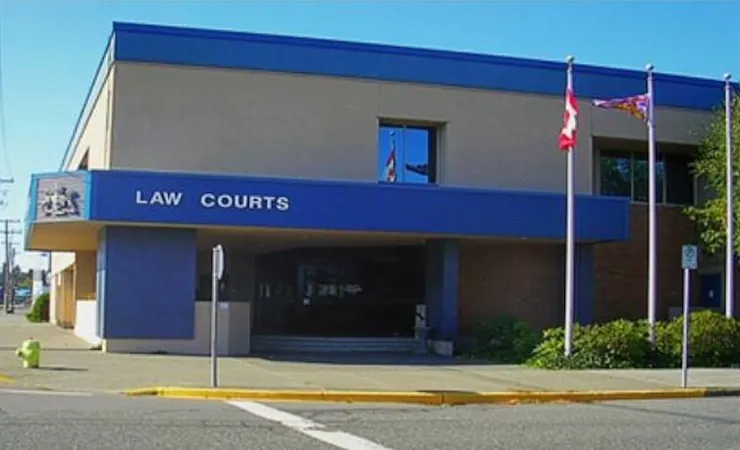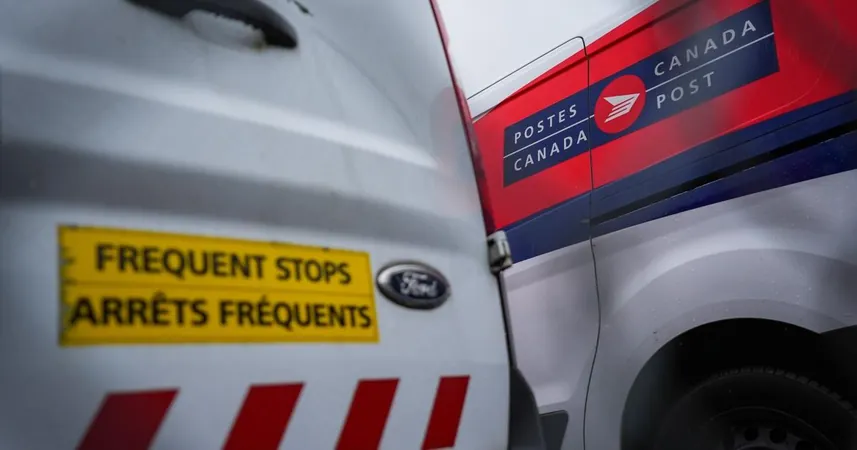
Shocking Judgment: Judge Calls Out Police for Reckless Use of Dogs in Arrests
2025-01-12
Author: Olivia
A Damning Revelation
In a damning revelation, a British Columbia judge has condemned the "culture of complacency" within law enforcement regarding the deployment of police dogs during arrests. During a recent sentencing hearing in Campbell River, Judge Dwight Stewart characterized the use of a police dog in the apprehension of Preston Hale Jaramillo as dangerous, emphasizing that it put not only suspects but also officers and the public at significant risk.
The Incident
Jaramillo was facing arrest on an aggravated assault warrant in January 2023 when the incident occurred. The chaotic nature of his arrest, which involved officers shouting commands while a police dog barked aggressively, led to confusion, heightening the risk of harm. Jaramillo found it nearly impossible to comply with the officers’ orders due to the noise and agitation of the dog, which was described as pulling on its leash and rearing on its hind legs. Judge Stewart noted that this situation created a genuine risk for Jaramillo, violating his Charter rights to life, liberty, and security.
Implications of the Ruling
While Jaramillo was ultimately found innocent of the aggravated assault charges that led to his arrest, he was sentenced to over three years in prison for firearm possession—significantly reduced due to the judge's acknowledgment of police misconduct during his arrest. Stewart asserted that the lack of a formal or informal risk assessment prior to employing the police dog contributed to an unsafe environment.
Pattern of Police Practices
This incident is not isolated. The judge pointed to a concerning pattern in police practices regarding the deployment of service dogs, indicating a "institutional nonchalance" towards assessing the need for their use. He highlighted that the decision to use a dog seemed automatic whenever Const. Kurt England, the dog handler, was involved, implying insufficient supervision and thought in high-pressure scenarios.
Legal Perspectives
Criminal defense attorney Sarah Runyon, who represented Jaramillo, believes this ruling could set a critical precedent. It formally acknowledges that police dogs—often thought of merely as tools—can inflict serious harm, drawing parallels to other weapons used by law enforcement. She points out that the mere presence of a police dog can escalate tensions during arrests.
Distressing Cases and Oversight
Several distressing cases in Campbell River highlight the risks of police dog use. In a tragic incident from 2021, a man was shot by police after the dog was mistakenly involved in a confrontation. Other individuals, like Shane Roberts, experienced life-altering injuries following dog bites during encounters with law enforcement.
Calls for Change
Despite these events, oversight of police dog deployments remains limited. Runyon argues for standardized protocols that would prompt officers to critically evaluate whether a police dog is genuinely necessary before deployment. Advocates are calling for more stringent guidelines and oversight surrounding police dogs, likening their use to Tasers and firearms, given their capability to inflict serious injuries.
Training Protocols
Doug King, a lawyer involved in raising awareness on this issue, stresses that merely introducing guidelines is insufficient. He argues for a shift in police dog training protocols, suggesting that the "bite and hold" technique should be replaced with a "bark and hold" method that would minimize the risks posed to suspects during apprehensions.
Civil Liberties Concerns
The B.C. Civil Liberties Association has taken a strong stance against the use of police dogs as weapons, with policy director Meghan McDermott calling it "uniquely dehumanizing." The association advocates for a re-evaluation of current standards and believes dogs should only be used for specific functions like search and rescue.
Public Reaction
The lack of significant public commentary or reaction from government authorities reflects a continued challenge in addressing these serious issues within law enforcement practices. The public, however, is left to grapple with the implications of police practices that can lead to grave consequences, urging for change in how police methods align with public safety and civil rights.









 Brasil (PT)
Brasil (PT)
 Canada (EN)
Canada (EN)
 Chile (ES)
Chile (ES)
 Česko (CS)
Česko (CS)
 대한민국 (KO)
대한민국 (KO)
 España (ES)
España (ES)
 France (FR)
France (FR)
 Hong Kong (EN)
Hong Kong (EN)
 Italia (IT)
Italia (IT)
 日本 (JA)
日本 (JA)
 Magyarország (HU)
Magyarország (HU)
 Norge (NO)
Norge (NO)
 Polska (PL)
Polska (PL)
 Schweiz (DE)
Schweiz (DE)
 Singapore (EN)
Singapore (EN)
 Sverige (SV)
Sverige (SV)
 Suomi (FI)
Suomi (FI)
 Türkiye (TR)
Türkiye (TR)
 الإمارات العربية المتحدة (AR)
الإمارات العربية المتحدة (AR)